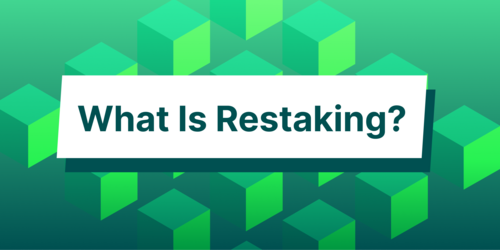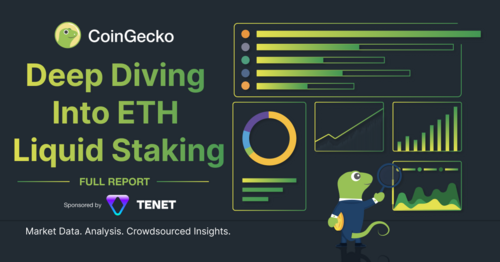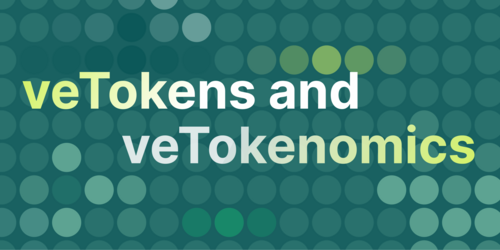What is Pendle?
Pendle is a yield management protocol that lets users get more from yield-bearing assets by separating them into different parts and letting users speculate on the changes in the underlying yield.
Key Takeaways
-
Pendle is an asset management protocol allowing users to take greater control over their yield via various stratagems, including longing and shorting, as well as unlocking the ability to speculate on yield fluctuations.
-
The main features of Pendle are yield tokenization, its AMM (Automated Market Maker), and vote escrowed tokenomics (vePendle).
-
Pendle Finance is DeFi’s answer to TradFi’s interest rate derivative market.

Cryptocurrencies derive their valuation solely from market demand, and this hyper-efficient valuation process makes speculating on their price movements exciting. But what if users could speculate on something more interesting than price movements? What if users could speculate on the yield generated by an asset? Welcome, Pendle Finance.
The new player in the yield management game allows users to speculate on the fluctuation in yield, max their yield, and even hedge against yield downturn.

Source: https://defillama.com/protocol/pendle
Pendle’s TVL (Total Value Locked) has continued to climb, surpassing $165 million at the time of writing, and the protocol has become a central player in the LSDFi narrative.
It has been a favorite of DeFi enthusiasts for several months, and Binance listing PENDLE in its innovation zone pushed the protocol into the mainstream consciousness. Whales predictably dumped PENDLE on retail at the first opportunity.
This article dives into the nuts and bolts of Pendle, a protocol that has become a mainstay of the Ethereum and Arbitrum ecosystems – along with a recent migration to the BNB Chain – and the possibilities it unlocks for users.
The key takeaway of Pendle is delivering greater flexibility for predictions related to yield changes. In essence, investors can make bets on market events that differ in nature from the simple price goes up. For example, more concise speculations can be made, such as a user betting that the yield produced by the liquidity token of a perp DEX will decrease over time.
Pendle introduces a wealth of features, all centering around fluctuations in yield and how investors can profit from this. It represents part of the new band of more sophisticated DeFi protocols that increasingly mirror more niche elements of TradFi. In Pendle’s case, the analogous TradFi section is bond stripping, where dealers take debt instruments and separate them into separate components: principal and coupon payments.
Broadly speaking, DeFi lending has trodden the path of floating-yield rates with supply-driven interest rates. Pendle operates in the fixed rate environment, allowing users access to more deterministic yields and increasing investors' ability to hedge and speculate.
Pendle delivers permissionless yield management, and the protocol has three core features.
1. Yield Tokenization
Pendle uses the SY (Standardized Yield) token standard. SY tokens are wrapped tokens that can be leveraged on Pendle and consist of two components: Principal Tokens (PT) and Yield Tokens (YT).
Any yield-bearing assets can be wrapped into an SY token. The token standard provides a standardized API for these assets within smart contracts allowing composability across DeFi, and this standard may even expand beyond Pendle with the Pendle team proposing ERC-5115.
Introducing greater composability for yield-bearing assets across DeFi would open a world of new possibilities, and the introduction of liquid staking derivatives (LSDs) has shown the first act of this performance.

Source: https://app.pendle.finance/pro/education/learn?level=1
Yield-bearing assets have become the norm in DeFi. Users take base assets, deposit them into a yield source, and receive a yield-bearing asset in return. Following the above example, placing DAI in a Compound lending pool would result in the user owning cDAI. The cDAI token denotes the amount of DAI supplied and the yield earned from the lending activity.
Therefore Pendle users would possess PT-DAI and YT-DAI, allowing them to freely trade both on Pendle’s unique AMM.

Source: https://docs.pendle.finance/ProtocolMechanics/YieldTokenization/Minting
Principal Tokens represent the principal of the asset, and Yield Tokens represent all the yield created by the asset. Instead of one token, investors now have two tokens. For ease of understanding, a user may have one stETH (Lido’s Liquid Staking Token). Within the Pendle ecosystem, this stETH would become SY-stETH equivalent to PT-stETH + YT-stETH.
PT-stETh is the initial amount of staked Ether, and YT-stETh is all the staking rewards accrued by that stETH. Users can redeem the PT on Pendle at maturity at a 1:1 ratio for the underlying asset. The YT entitles the holder to all the yield generated by the asset claimable in real-time.
wstETH Example

To understand the process and the potential it unlocks, take the example of wstETH. A user who deposited wstETH will receive PT-wstETH and YT-wstETH.

Source: https://app.pendle.finance/pro/education/learn?level=1
A user holding both components can redeem the underlying asset at any time. A user holding only the PT-wstETH can redeem it for wstETH (the underlying asset) after maturity without the YT component. Note that PT tokens always trade at a discount because they do not include the yield component. And a user holding only YT-wstETH collects all the staking rewards (generated yield) until maturity.
More on strategies later. The key takeaway from this section is that Pendle takes a yield-bearing asset, splits it into two parts, and allows users to trade these individually.
Quick Glossary
- SY: Standardized Yield Token includes principal and yield (SY= PT + YT)
- YT: Yield Token (all associated yields generated by the asset)
- PT: Principal Token (the principal)
2. The Pendle AMM
Effective trading of PTs and YTs requires a marketplace, and the Pendle AMM (Automated Market Maker) rests at the heart of the entire ecosystem. The underlying mechanism of Pendle involves users making bets on the yield produced by yield-bearing assets.
Users who buy YT go long on yield. They bet the yield (Underlying APY) will trade above the Implied APY – a market-driven price on the future APY of the asset. In simple terms, if the yield maintains or increases, they win.
If users want to go long on wstETH yield, they can buy wstETH Yield Tokens (YT-wstETH) on Pendle. As long as the yield produced by these yield tokens outweighs the purchase cost, the trade is a winner.
Theoretically, the counterparty for this trade would be a user who believes that the premium paid would outweigh the yield produced. In practice, liquidity providers on Pendle act as the counterparty to all trades.
Pendle’s AMM pairs PT with SY and leverages flash swaps to enable YT trades through the same pool, meaning all trades for a particular asset route through a single liquidity pool.
Buying YT
When buying yield tokens, buyers send SY to the swap contract, the contract withdraws SY from the pool, it mints PT and YT from the SY, the YT goes to the buyer, and the PT gets sold for SY to replace the amount initially withdrawn by the contract.
This model has several advantages. LPs collect greater fees due to three token types traded in a single pool, the pools have better liquidity depth, and are straightforward for users.
V2 Upgrades
This transition was one of the critical upgrades from Pendle V1 to Pendle V2. Other upgrades to the AMM model include increased capital efficiency by introducing concentrated liquidity, auto-routing, and a dynamic curve reducing impermanent loss.
Pendle benefits from the fact that yield ranges typically are easier to predict than the spot price of an asset, meaning that with concentrated liquidity, Pendle can deploy deep liquidity within the expected band. The dynamic curve shifts accounting for the gradual change in the price of PT as it reaches maturity – the closer to maturity the greater the convergence with spot price. Pendle also enjoys the highly correlated nature between the swappable assets, further reducing impermanent loss.
3. vePENDLE
The final piece of the Pendle puzzle is a vote escrowed token: vePENDLE. This is important because vePENDLE holders gain governance rights and channel incentives on the platform. This has led to what has been dubbed ‘The Pendle Wars, ’ which the article will explore later. These holders also enjoy boosted yields and share in protocol revenue. A later section will discuss PENDLE and vePENDLE in more detail.
The Current Macro – LSDFi & Pendle’s Place Within It

Source: https://dune.com/defimochi/lsdfi-summer
At the time of writing, liquid staking protocols have a cumulative TVL of more than $21.5 billion. The above graphic shows that the leading LSDFi protocols have attracted nearly $700 million in liquidity. Market penetration remains relatively low; therefore, there is still plenty of room for growth.
LSDs introduced yield-bearing assets composable across the ecosystem. Better yet, returns are denominated in ETH, a blue-chip asset. This turned LSDs into a capital sink, and capital makes opportunities and creates narratives. LSDFi summer has been raging on, and it will likely be the defining narrative for the rest of 2023.
LSDs provided the perfect base asset for Pendle. The variable nature of Ethereum staking rewards gave a prime area for speculation. And the ability to purchase assets at a discount let Ethereum bulls lock in fixed APYs through PTs.
Yield-Bearing Assets
stETH was the first notable example of a yield-bearing asset with deep composability throughout DeFi. Hence Pendle’s advocating for ERC-5115 should be considered with appropriate gravity; a universal standard for yield-bearing assets would provide a fearsome tailwind for Pendle. Users could freely speculate on the floating interest rates across lending protocols, and the speculative element of Pendle would flourish.
Pendle Earn vs. Pendle Markets
There are two sides to Pendle: Pendle Earn and Markets.
Pendle Earn

Source: https://app.pendle.finance/simple/getting-started
The first is Pendle Earn, which is more basic, allowing users to purchase assets at a discount and become an LP. Purchasing assets at a discount means that users purchase a PT and have to wait until it matures – the deduction in price comes from removing the yield component, which is sold off to other buyers. LPs receive swap fees, PENDLE incentives, and yield from the underlying asset.
Pendle Markets
Source: https://app.pendle.finance/pro/markets
Pendle Markets is where things get more exciting, and users can trade yield. The core plays users can make include longing assets at a discount, locking in fixed yield, going long or short on yield, and combining these three methods to create yield management strategies of varying complexity.

Source: https://app.pendle.finance/pro/markets
Understanding the different APYs featured on the marketplace will be essential before diving into how to use Pendle.
-
Maturity is the time period until a PT can be redeemed for the underlying asset and the window within which the YT produces yield.
-
Underlying APY shows the seven-day moving average APR of the core asset (in the above example Ethereum staking rewards from Lido)
-
Implied APY is what the market thinks the future APY of the core asset will be
-
Long Yield APY is the reward for buying and holding YT assuming the asset’s base yield remains constant
-
Fixed APY is a set and guaranteed APY available for users who want to hold a PT until maturity.
Pendle: Core Use Cases
Here are some core use cases of Pendle:
Locking in a Fixed Yield
Users can buy a PT, hold it until maturity, and redeem the underlying asset. In this case, users lock in a fixed yield at the point of purchase.
Ideally, users want to purchase a PT when the Implied APY exceeds the Underlying APY. In this scenario, the market prices the asset assuming an increased yield. Users need to work out what they think the average yield of the asset will be and compare it against the market price.
An example: Economic activity on the Ethereum network rises (think memecoin season), leading to additional execution layer rewards for stakers. In this situation, the Implied APY may rise. If a user thinks the good times will not last, they could choose to lock in a higher Implied APY, and if they hold the asset until maturity, they will receive this Implied APY for the entire duration.
GLP is an index of assets, and the GLP pool on GMX is the counterparty to traders. More traders getting liquidated means more profit for GLP stakers. In this example, the Underlying APY is 10.5%, and the Implied APY is 14.7%. The market predicts that the GLP yield will go up, and users can bet against this consensus.

Source: https://app.pendle.finance/pro/markets
Before jumping into the trade, users should ask themselves what they think the future yield of GLP will be. If they believe the Underlying APY will rise, it is probably not a good time to lock in a fixed rate. But it would be a great time to lock in a fixed rate if they think it will remain steady or decrease.
Longing Yield
Pendle allows users to go long on yield – to bet that generated yield will either sustain or increase. To do this, users purchase YT.
Again the success of the trade boils down to the relationship between the Implied APY and the Underlying APY. Underlying APY above Implied APY is the ideal scenario for longing yield.

Source: https://app.pendle.finance/pro/markets
In the above example, a PENDLE-ETH LP token, the Underlying APY rests decently above the Implied APY – theoretically, the perfect setup for longing yield. But users again need to ask themselves if they believe the Underlying APY will sustain. Considering that PENDLE has recently received plenty of attention, this may be a short-term spike that does not persist.
But if users believe this APY will last or even increase, it would be an excellent time to be long on yield. The profitability of a long yield trade can be calculated by future yield minus YT cost.
Shorting Yield
Users can also hypothetically short yield on Pendle. Although locking in a fixed rate means users fade yield, there is a more direct method to short yield on Pendle:
Users mint an SY. Sell the YT component, wait for it to drop, and then purchase it back, combining the PT and YT to redeem the asset.
Yield Management on Pendle
Pendle Finance is DeFi’s answer to TradFi’s interest rate derivative market. Derivatives markets always tend to outgrow the underlying asset and are a sign of market maturity. Thanks to Pendle, users can now hedge against changes in yield or assume risk and speculate. And because of Pendle’s AMM, LPs earn fees from all this action – a TradFi-inspired service delivered in a permissionless package.
Users keen to learn more should investigate Pendle Education, a fantastic resource that breaks down different strategies for trading yield.
Tokenomics: PENDLE and vePENDLE

Source: https://app.pendle.finance/vependle/overview
Pendle opted for the vote escrowed token model with vePENDLE as the ecosystem's key. vePENDLE has a variable lock rate (up to two years) with a decay function encouraging users to relock their PENDLE for maximum benefits.

Source: https://docs.pendle.finance/ProtocolMechanics/Mechanisms/Tokenomics
Pendle has aggressively incentivized liquidity provision on the protocol by distributing PENDLE over recent months. As of October 2022, weekly PENDLE emissions totaled 667,705, declining by 1.1% each week until April 2026.
Team tokens have fully vested, and the whitepaper details that the allowed terminal inflation rate for the PENDLE total supply will be 2%.

Source: https://dune.com/coumarin/pendle-war
In summary, Pendle has emitted the bulk of tokens already, team tokens have vested, and the amount of PENDLE locked steadily increases – note the profit taking at the Binance listing. Overall the tokenomics model looks robust.

Source: https://docs.pendle.finance/ProtocolMechanics/Mechanisms/vePENDLE
The generous incentives offered by Pendle have led to more than 25% of the circulating supply being locked. The offerings include 3% of all yield accrued by YTs, 80% of the swap fees generated from the pools voted for, up to 250% additional yield on LP positions, and, critically, the ability to channel incentives causing The Pendle Wars.
The Curve Wars V2: The Pendle Wars
Reward channeling creates a financial incentive, and history repeats itself. Similar to the Curve Wars, a battle has erupted amongst protocols to control the largest share of vePENDLE and control reward distribution.
Protocols have been built on top of Pendle to maximize farming rewards, and the trade-off mirrors the Curve Wars. Users can access maximum rewards; to do so, they forego their governance rights but can exit their locked positions – a semi-liquid position in return for governance rights.

Source: https://dune.com/coumarin/pendle-war
The two central agents in this unfolding dialogue are Penpie and Equilibria, with the latter recently accumulating the largest percentage of vePENDLE.
Users benefit from the rewards achieved from maximal lock-up periods and receive the native token of the alternative protocol on top of their rewards, further juicing the yield.
All the leading participants in the Pendle Wars have witnessed depegs in their version of vePENDLE. However, DeFi users remain the same. Offer them boosted yields and the potential to exit even with a healthy fee, and they will jump at alternative semi-liquid versions of the original veToken.
The Pendle Wars have one big winner: Pendle. The protocols building on top continuously lock their tokens to facilitate the best yields to attract more users, and this removes PENDLE from the market and increases buy pressure.
Pendle’s Future
Tracing the thread of success throughout DeFi bodes positively, and the contemporary climate also leans heavily in Pendle’s favor. The most successful DeFi protocols serve a simple and well-understood use case – Aave’s accomplishments exemplify this idea.
Concerning Pendle, TradFi’s interest rate derivatives market has a notional value exceeding $400 trillion, meaning the protocol has proven product market fit. Additionally, Pendle operates on the frontiers of a growing yet uncoined narrative, which will be called Sophisticated DeFi/ InstituteFi for simplicity. This trend sees the principles of TradFi/ TradFi services migrated into DeFi but with the advantage of becoming permissionless and transparent. As more TradFi investors enter the space, they will likely gravitate towards the more intricate services DeFi offers. Pendle represents an obvious stop with market dynamics and products familiar to these investors.
Another incredible driver of growth comes from the creation of primitives and composability. Pendle’s proposal for ERC-5115 provides a salient example, but on a more granular level, DeFi protocols have begun to integrate PTs. Lucid Finance and Dolomite have enabled lending and borrowing collateralized by PTs. Widescale adoption would transition PTs from assets with a utility on Pendle to a primitive widely accepted within DeFi.
Pendle’s cross-chain expansion and increasing integration of new assets broaden the scope of its markets and, therefore, its ability to generate revenue, making PENDLE ownership more appealing.
Protocols, such as Penpie, building on top of Pendle strengthen its position in the ecosystem, and Pendle’s dual interface approach makes it accessible to more users. Regarding ambassadors, Pendle has recruited a respected team, including Stephen (DeFi Dojo) and Crypto Linn, both crypto figureheads with proven track records of finding protocols that provide value and tend to appreciate with time.
In conclusion, it all comes down to product market fit, innovation, and overall composability. Pendle ticks all three boxes, and introducing yield management marks a significant step forwards for DeFi and the refinement and complexity of the services available to users. Everything indicates that Pendle still has enormous room to grow.

Kofi J has been active in DeFi since the 2020 summer explosion and has been rugged more times than he can remember. He hopes to make the decentralized economy a little bit more accessible through his prose. Follow the author on Twitter @k_pangolin










 Or check it out in the app stores
Or check it out in the app stores